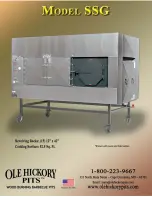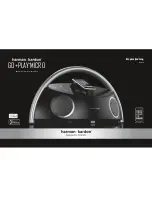
SAGE SERIES L75i
WISDOMAUDIO.COM
5
spectrum. One of Wisdom Audio’s strengths is in seamlessly blending these technologies
— particularly important given the high standards set by our planar magnetic drivers.
Of course, the dynamic woofers themselves must be rather extraordinary to “keep up”
with the planar magnetic drivers right up to the crossover frequency.
Our woofers are different because they must be to do their job. Specifically, we need
highly dynamic, uncompressed bass (to keep up with the planar magnetic drivers) that
does not depend on a critical amount of enclosure volume (since these speakers are
mounted in your wall and use the space inside the wall as their “enclosure”). These two
design goals require rather extraordinary attention to myriad details.
The motor and suspension system of these woofers therefore includes all the critical
damping required for optimal operation. (In most speakers, the woofers depend on the
air trapped inside their enclosures as an additional “spring” to help them behave
properly.) Technically, this approach is known as an “infinite baffle” design. In practice,
the volume of air behind the speaker does not have to be infinite, of course. It just
needs to be large enough to not act like an acoustic “spring”. Recommended and
minimum enclosure volumes for the speaker are listed in the Specifications section and
repeated on the Dimensions page.
Many speakers include a mid-bass “bump” in their response to give the illusion of going
deeper in the bass than they actually do. Unfortunately, this “bump” makes blending
them seamlessly with a high-quality subwoofer almost impossible.
All Sage Cinema Series speakers have been designed to optimally crossover at
80 Hz, which is the most common bass management transition used to integrate with
subwoofer(s).
Line Source Speakers
Almost all loudspeakers radiate sound into the room as imperfect “point sources”. This
means that most of the energy they put into the room expands as an ever-enlarging
sphere, as though emerging from a single point in space. This results in a multitude of
reflections from the ceiling and floor that can degrade sound quality.
































